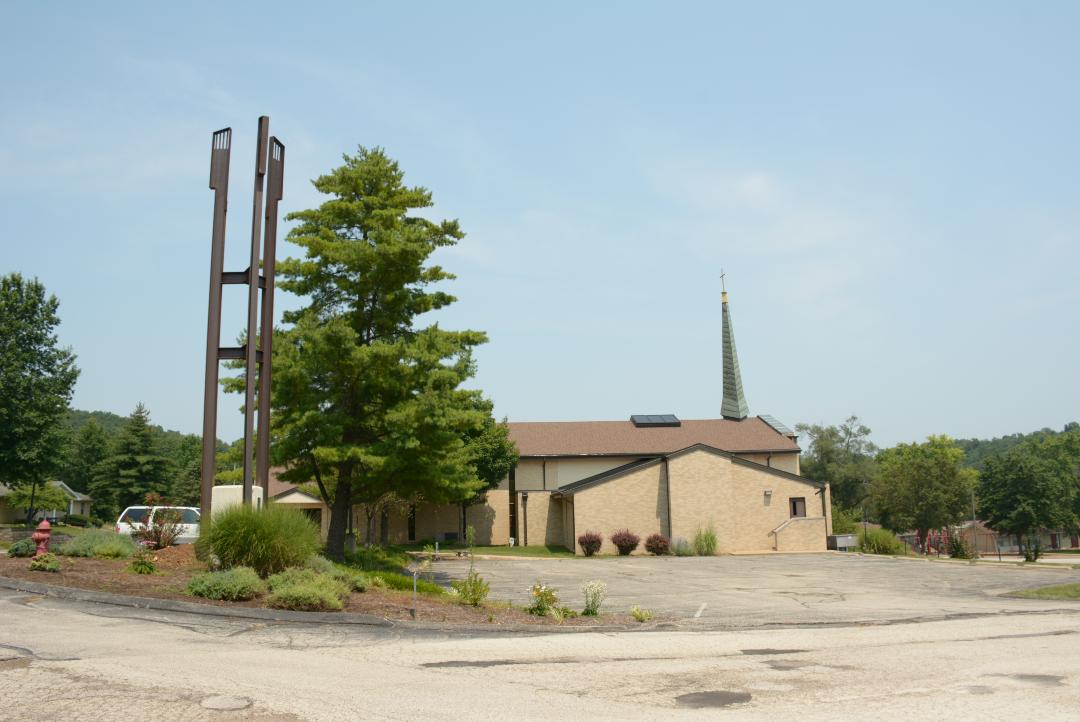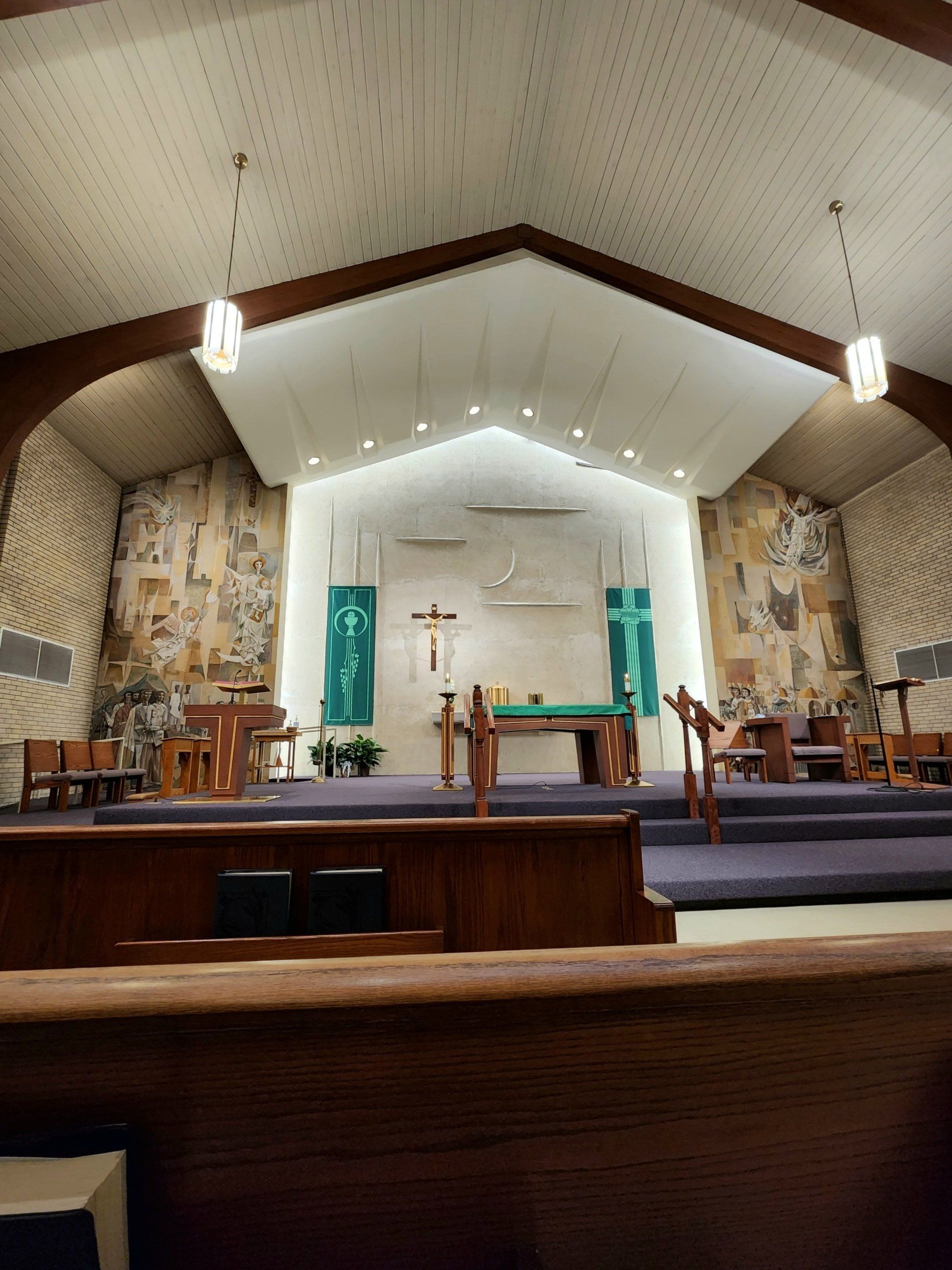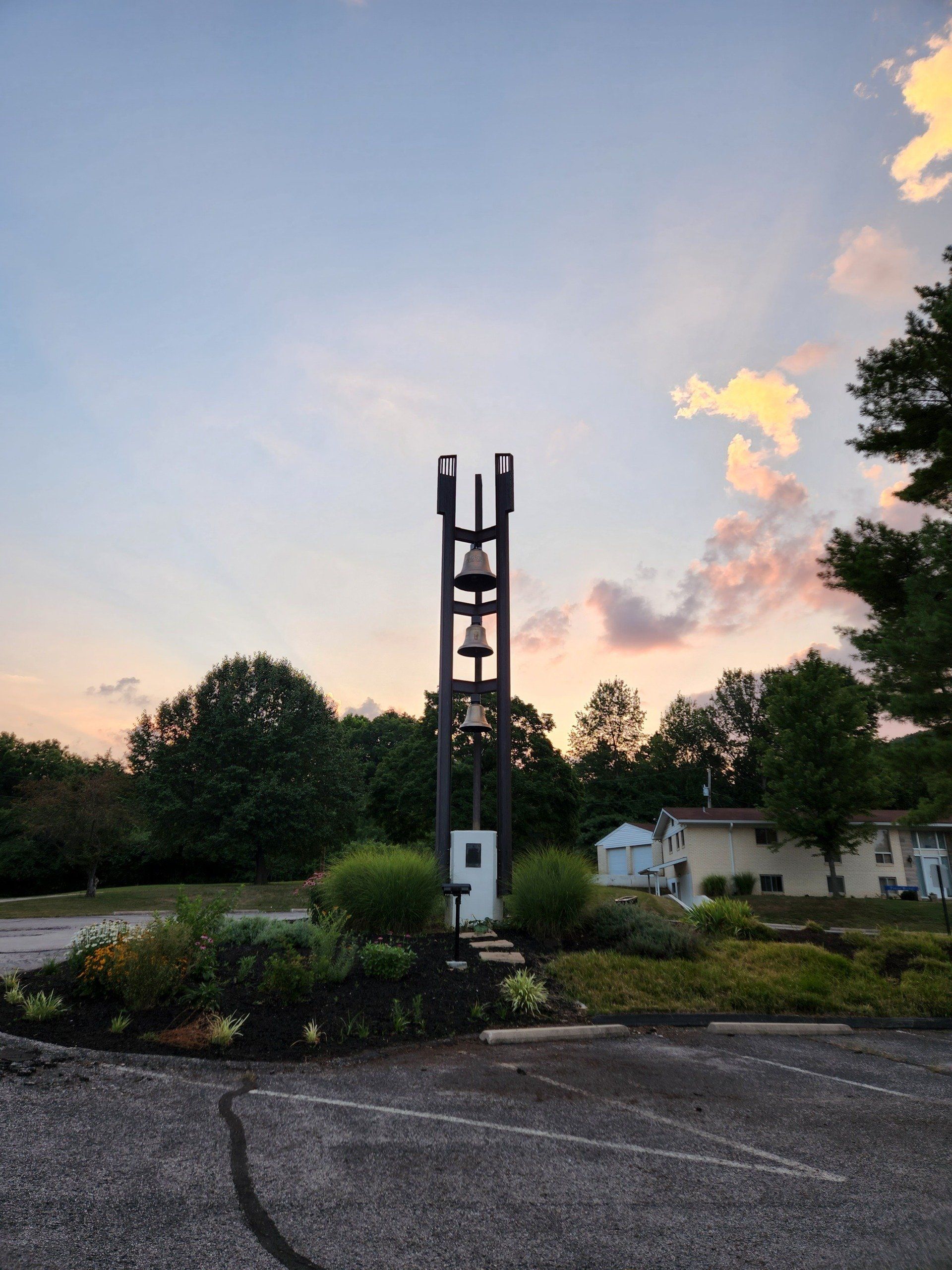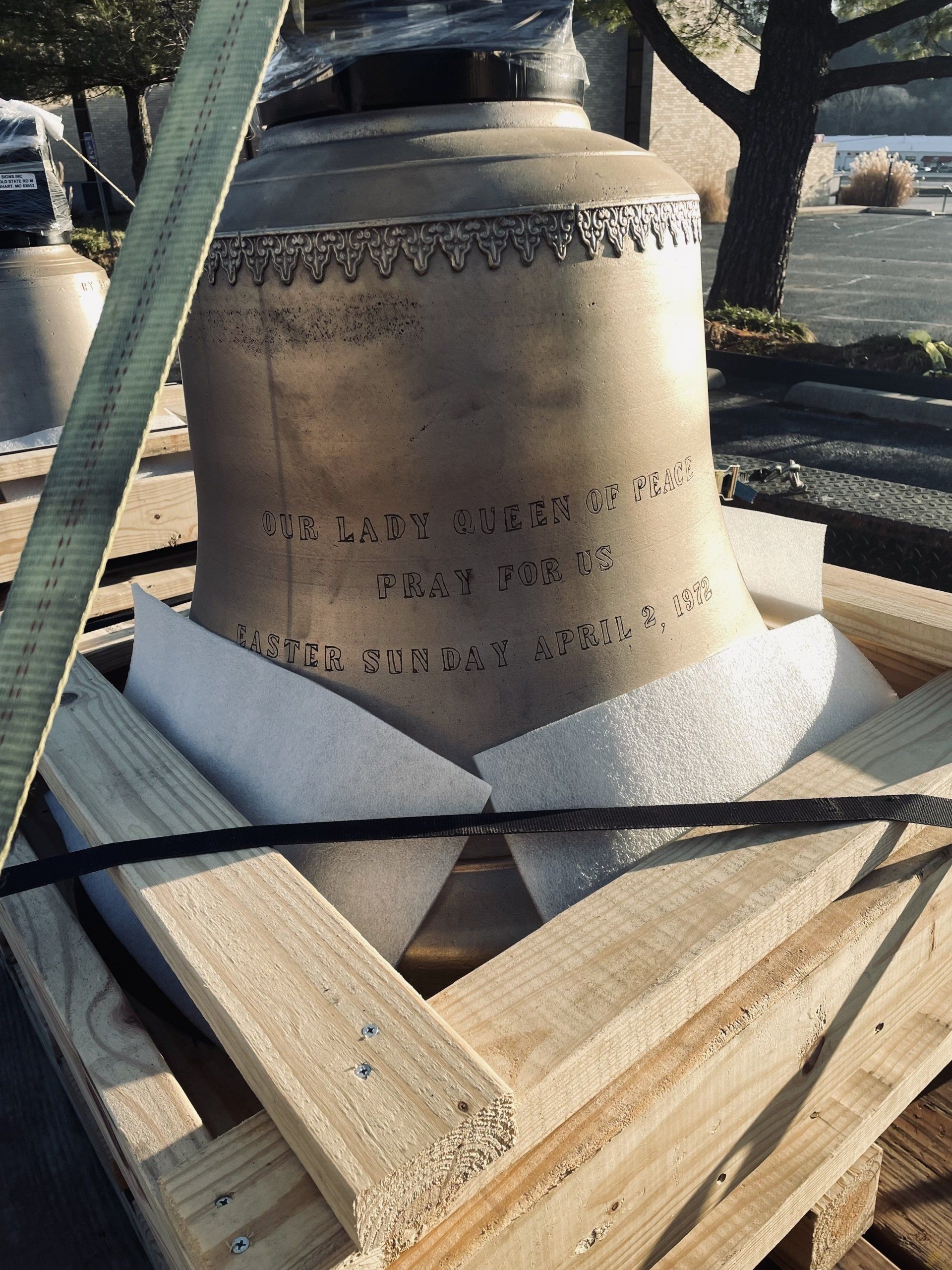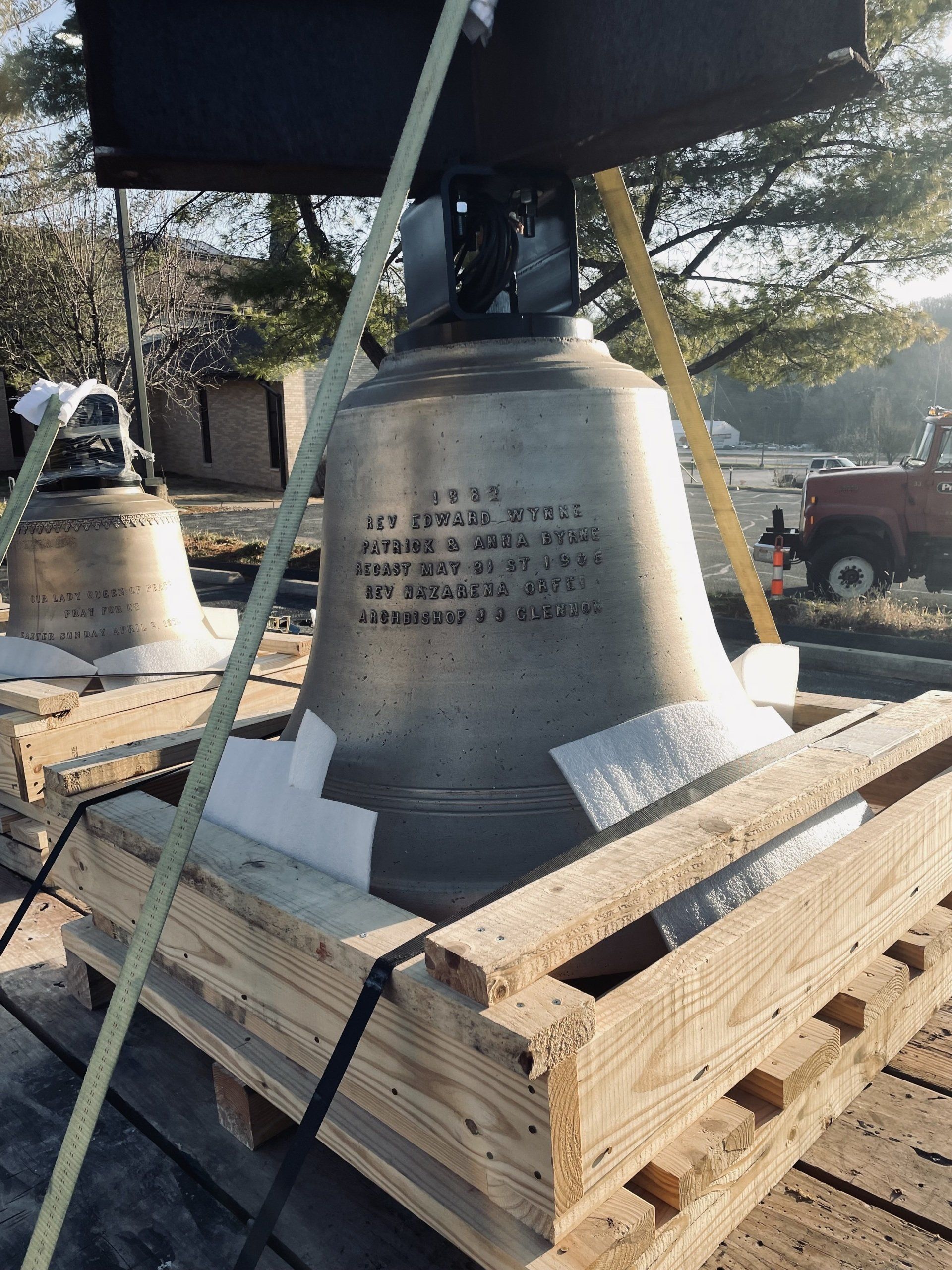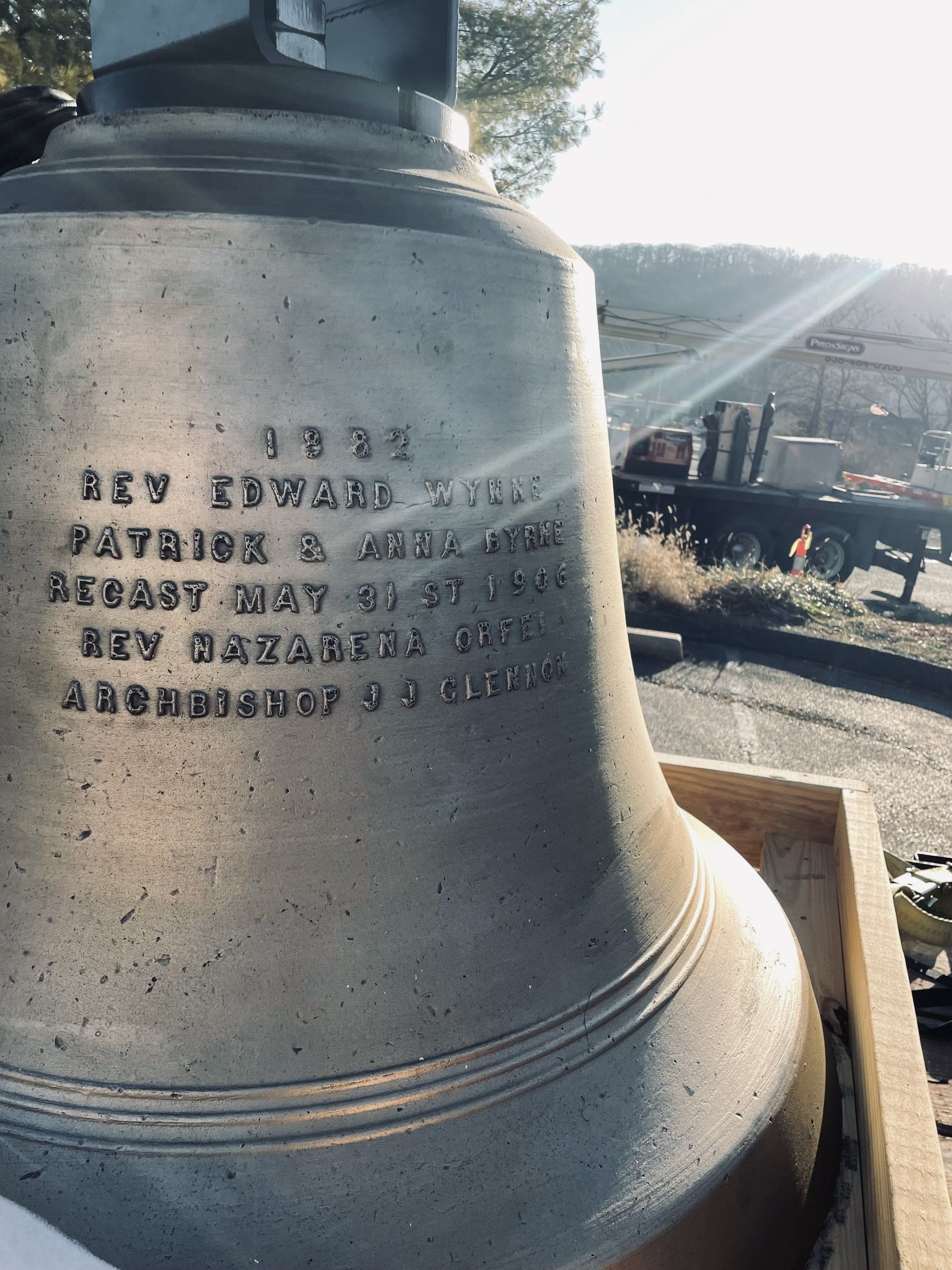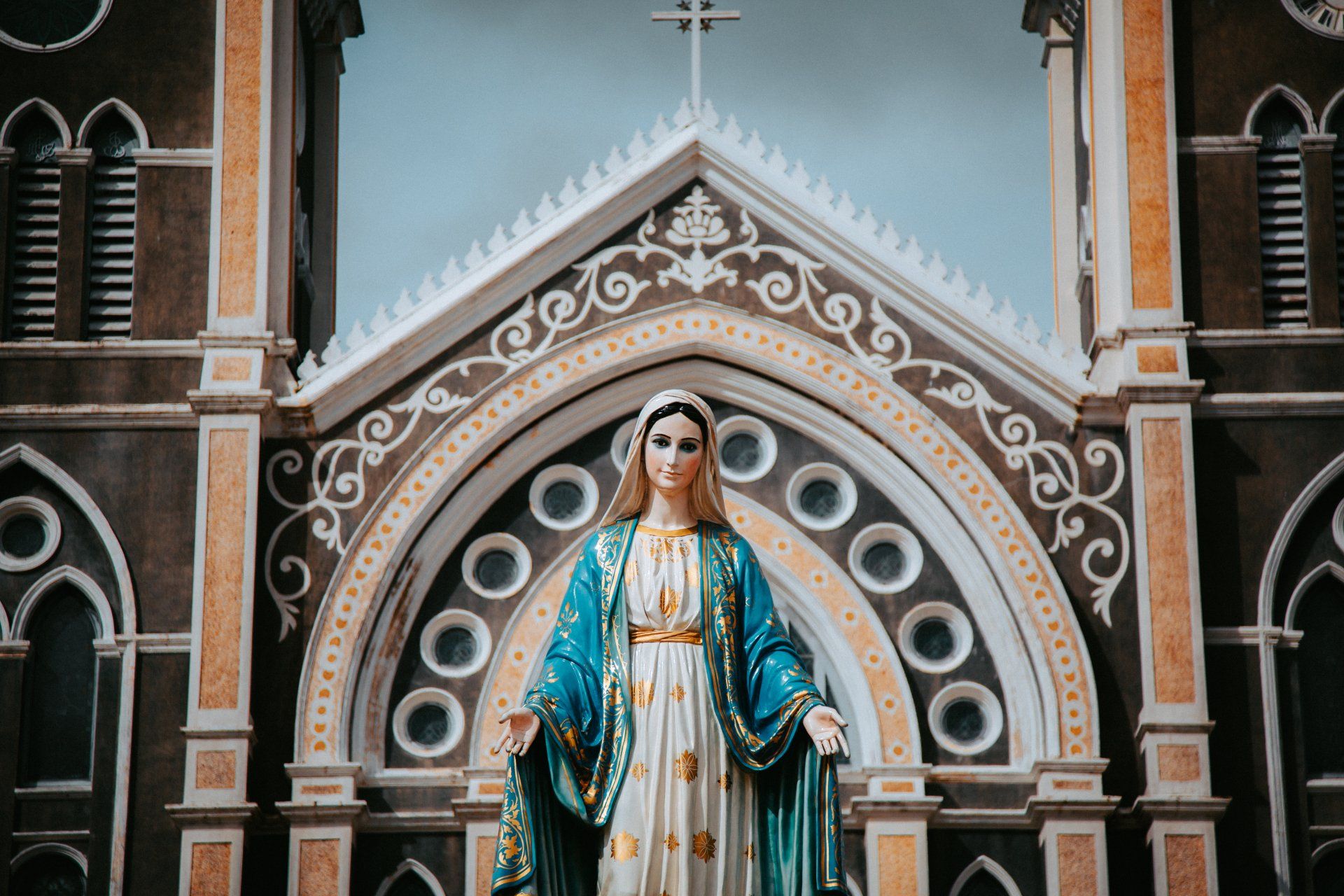The History of the Catholic Church in Northwestern Jefferson County (House Springs Area):
The history of Our Lady Queen of Peace Parish actual begins in the early 1800's with Irish Catholics settling in the area between the Meramec and the Big River. In 1844 the first parish to serve the settlers of this area was established by Bishop Kenrick, the first Archbishop of St. Louis. The first church built to serve the new settlers was St. Patrick's of Down, located on the Meramec river about four miles south of Pacific. As the population of the area increased, St. Patrick's was no longer centrally located.
A new St. Patrick's was built, as well as the church of St. Columbkille (1850), which was a mission parish to St. Patrick, in the present House Springs area in Byrnesville. Initially, both churches were served and administered from St. Patrick's.
In 1880 St. Columbkille received its first Pastor, Fr. William Gallagher; the House Springs area now was an independent parish.
The population of the area continued to grow and new parishes emerged. By the turn of the century, many Catholics from House Springs and High Ridge who had been attending Mass at St. Columbkille Catholic Church were now attending at St. John's Church in Rock Creek or St. Joseph's Church in Kimmswick.
In 1905, St. Philomena Catholic Church was built in House Springs as a mission of St. Columbkille Catholic Church. It remained a mission church until 1948.
During World War I (1918), Fr. Jeremiah Murphy Cawas was appointed to serve the two Byrnesville-House Springs parishes. He remained pastor until his retirement in 1955. Through the time of the two World Wars and the Great Depression, the population of St. Columbkille Catholic Church remained rather stable or decreased slightly, during the construction of Highway 30, giving easy access to St. Louis, which contributed to the development of subdivisions and a rapid expansion in the population of House Springs and St. Philomena Catholic Church.
Fr. Jeremiah Murphy remained at St. Columbkille Catholic Church until 1955, when Fr. Joseph O’Brien became pastor (in 1955). In 1957, Fr. O’Brien left for military service.
Fr. Joseph Dwyer came to St. Philomena Catholic Church, on April 23, 1948 and remained pastor until 1956. Therefore in 1948, there were Pastors at both St. Columbkille Catholic Church and St. Philomena Catholic Church. In 1956 Fr. James Curtin, became Pastor to St. Philomena Catholic Church. In 1957 he also became administrator of St. Columbkille, when Fr. O’Brien left for military service.
Fr. James Curtin remained resident pastor of St. Philomena's until the two parishes were merged in 1959.
On September 18,1959, it was announced that St. Philomena and St. Columbkille, would become one parish, the New St. Philomena Catholic Church.
On April 10, 1960, ground was broken for a new church. A new, larger church to accommodate the parishioners of the merged churches and intended to be the new St. Philomena's, was built on the present site. With the reorganization of the calendar of saints, the Church was dedicated by Joseph Cardinal Ritter on July 20, 1961 as Our Lady Queen of Peace.
On July 20, 1961 the dedication of the new Church with a new name - Our Lady Queen of Peace took place. In September 1961, Fr. Thomas Woracek, became the next pastor of Our Lady Queen of Peace Catholic Church.
Since its dedication in 1961, Our Lady Queen of Peace has served the needs of Catholics in a large area of Jefferson County. By the parish's Twenty Fifth Anniversary in 1986, an excellent parish school was operating and a large Parish School of Religion program was in place. Parish based service groups and faith formation groups were in place to nourish the spiritual needs of parishioners and take the spirit of Catholic faith at Our Lady Queen of Peace beyond our borders.
On March 30, 2003 the completion of the construction of the sanctuary added two wings onto the existing structure, which doubled the seating capacity from 300 to 600 people. Reverend Norb Ernst, Pastor, said the new sanctuary and other amenities generated a new spirit in the church as the parish prepared for Easter. The $2.2 million project was financed from a $300,000 gift from the St. Louis Archdiocese, $1.8 million raised by parish members and a loan.
There is a beautiful new gathering area which will also double as a cry room, a new elevator for the handicapped, a new restroom, a remodeled cafeteria below the church and new parking and landscaping outside. The baptismal font was made by a local artist, Todd Kinnikin of Byrnesville. It captures the surrounding environment. It is made from metal and rocks and has running water, which symbolizes life giving. The rocks and iron are in the shape of a tree and hills like there are in Jefferson County.
It is hard to discern the parts of the building that are new, and Ernst said that can be credited to the architect, who combined both elements flawlessly. “We love how the architect designed it. He added the new sections with the existing building. Many people say it looks like the original part of the building.”
The lights are new and give artistic options with light which bring a beautiful prayerful atmosphere.
“We don’t just have a beautiful building” Ernst said. “The beautiful spirit of our congregation far exceeds the beauty of our building. The most important part of our parish or congregation is that we care about each other.” (Meramec Journal Vol. 36, Number 28; Sunday, April 6, 2003)
Our Lady Queen of Peace has moved into the new millennium and has celebrated its fiftieth anniversary in 2011.
Due to decreased enrollment, the parish school was forced to close its doors after the 2018-2019 school year.
The parish remains a vibrant community of faith, a caring family of believers, and a model of Christian Witness in Jefferson County and the Archdiocese of St. Louis.
Clergy at Our Lady Queen of Peace - Past & Present
Pastors
· 1961 Fr. James Curtin
· 1961-1972 Fr. Thomas Woracek
· 1972-1983 Fr. Robert L. Roedig
· 1983-1989 Fr Hubert E. Creason
· 1990-1990 Fr. Donald Heck
· 1991-2004 Msgr. Norbert A. Ernst
· 2004-2008 Fr. Ferdinand J. Wesloh
· 2008-2010 Fr. Patrick Christopher
· 2010-2016 Fr. Michael G. Murphy
· 2016-2023 Fr. Dennis C. Schmidt
2023-Present Fr. Thomas C. Miller
Associate Pastors
· 1961 Fr. Raymond Kramer
· 1961-1964 No associate pastor
· 1964-1966 Fr. Albert Rehme
· 1966-1968 Fr. David Sullivan
· 1968-1972 Fr. George Garthoeffner
· 1972-1979 None - assisted by the Franciscan at Evergreen Hills
· 1979-1980 Fr. Donald Straub
· 1980-1986 Fr. Frederick Meyer
· 1986-1988 Fr. Donald R. Wester
· 1989-1995 Fr. Joseph G. Kempf
· 1995-2001 Fr. Larry T. Huber (1997-1999 Faculty at St.Pius X)
· 2001-2015 Rev. Donald F. Molitor (retired in 2009)
· 2009-2019 Rev. James T. Beighlie
2023-Present Fr. John Reiker
Deacons
· 1986-1990 Deacon Fred Hirtz
· 1990-Present Deacon Thomas J. Gerling
· 2000-Present Deacon Paul J. Turek, Sr.
· 2001-2005 Deacon Frederick J. Mueller
Wings of the Church
On March 30, 2003 the completion of the construction of the sanctuary added two wings onto the existing structure, which doubled the seating capacity from 300 to 600 people. Reverend Norb Ernst, Pastor, said the new sanctuary and other amenities generated a new spirit in the church as the parish prepared for Easter. The $2.2 million project was financed from a $300,000 gift from the St. Louis Archdiocese, $1.8 million raised by parish members and a loan.
There is a beautiful new gathering area which doubles as a cry room, a new elevator for the handicapped, a new restroom, a remodeled cafeteria below the church and new parking and landscaping outside.
The baptismal font was made by a local artist, Todd Kinnikin of Byrnesville. It captures the surrounding environment. It is made from metal and rocks and has running water, which symbolizes life giving. The rocks and iron are in the shape of a tree and hills like there are in Jefferson County.
It is hard to discern the parts of the building that are new, and Ernst said that can be credited to the architect, who combined both elements flawlessly. “We love how the architect designed it. He added the new sections with the existing building. Many people say it looks like the original part of the building.”
The lights are new and give artistic options with light which bring a beautiful prayerful atmosphere.



